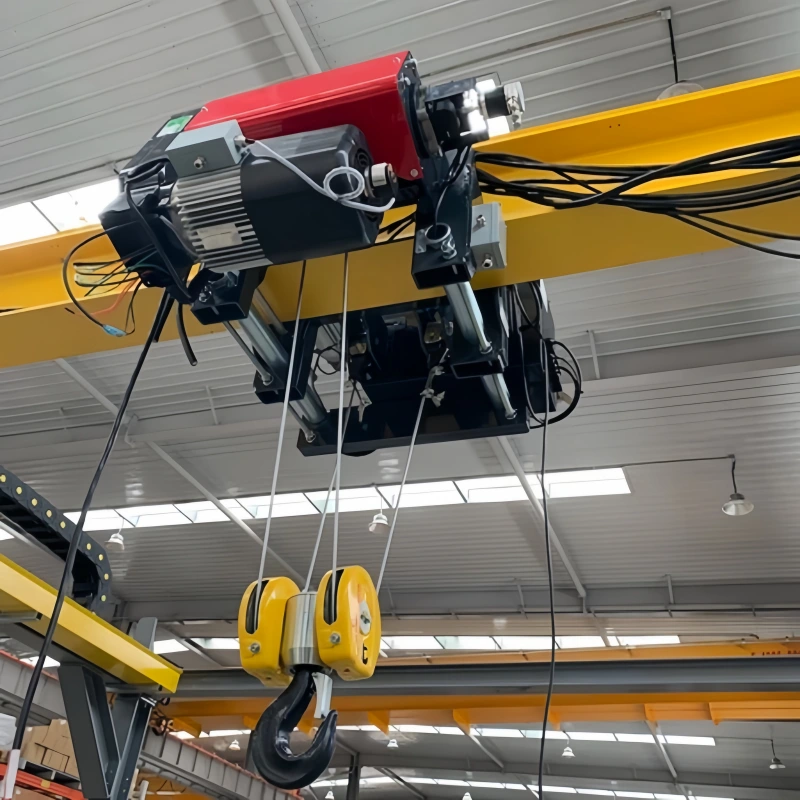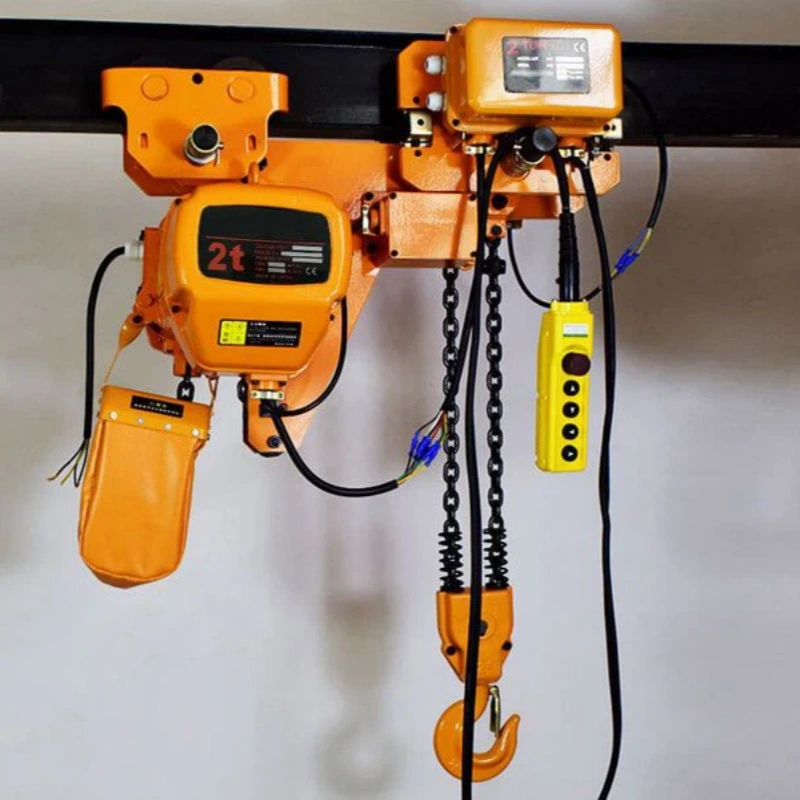You rely on chain master links to connect and secure loads during lifting operations. These strong, closed-loop connectors play a key role in keeping rigging and sling assemblies safe and stable.
When you understand master links and rings in rigging, you help prevent accidents and keep your team efficient. The right master link choice lets you work with confidence, knowing your equipment meets the highest standards.
Key Takeaways
Master links are essential for connecting multiple sling legs to a single lifting point, ensuring stability and even weight distribution during lifting operations.
Regular inspections of master links are crucial. Check for cracks, wear, and deformation before each use to maintain safety and prevent accidents.
Choose the right type of master link based on your rigging needs. Consider factors like load capacity, compatibility with slings, and environmental conditions.
Always select certified master links from trusted suppliers. This ensures compliance with safety standards and enhances the reliability of your lifting operations.
Master Links and Rings in Rigging
What Are Master Links?
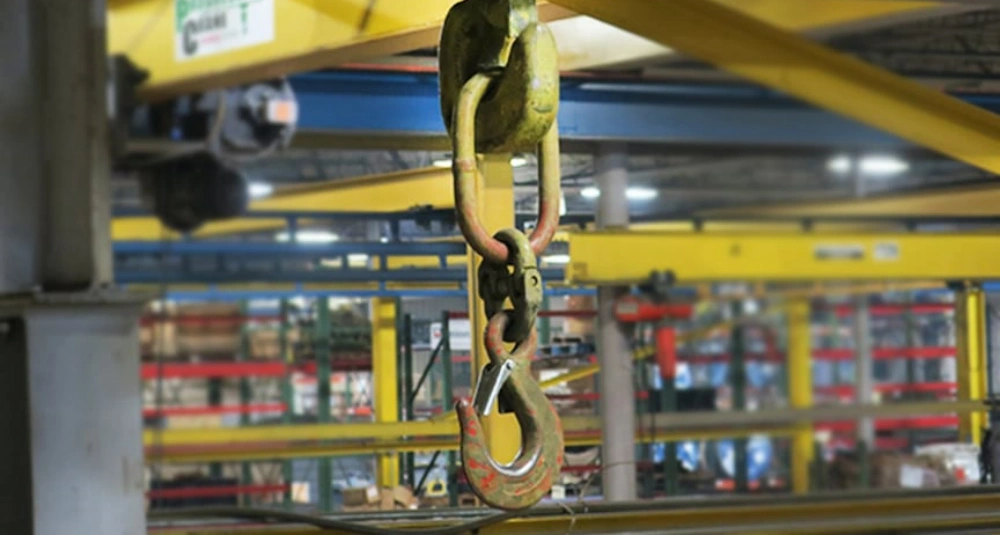
You use master links as strong, closed-loop connectors in rigging systems. These links often have an oblong or pear shape and serve as the main connection point in multi-leg sling assemblies. Master links connect the legs of a sling to a crane hook or other lifting device.
Their robust, single-piece construction gives them high working load limits and breaking strengths. Most master links are made from high-strength alloy steel, which allows them to handle heavy-duty lifting tasks. You will find master links in construction, marine, and industrial settings where safety and reliability matter most.
Component | Description |
|---|---|
Master Links | Used as connection points in multiple-leg sling assemblies, ideal for attaching to crane hooks. |
What Are Master Rings?
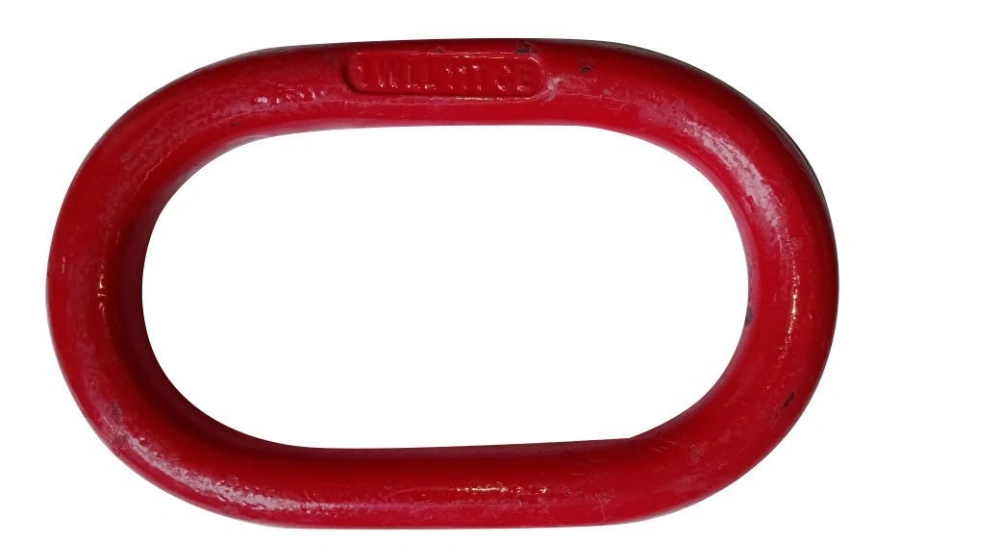
Master rings are circular connectors used in rigging. You might see them in fabrication shops or small machine shops. While less common than master links for collecting sling legs, master rings still play a key role in certain rigging setups.
They can serve as connection points in various configurations, especially when you need a round shape for specific applications. Master rings are also made from strong materials like alloy steel or stainless steel, which gives them durability and resistance to corrosion.
Component | Description |
|---|---|
Master Rings | Circular rings are used for rigging connections, less common as collector links compared to master links. |
Role in Rigging Assemblies
Master links and rings in rigging help you create safe and stable lifting assemblies. You use them to connect shackles, chains, or wire ropes to a central lifting point. In multi-leg sling assemblies, oblong master links collect all the sling legs and balance the load.
Master rings can also accommodate multiple-leg assemblies, though they are less common for this purpose. Both types of connectors ensure that your rigging system remains strong and secure during lifting operations.
Master links and rings in rigging serve as essential connection points.
You rely on them for stability and load distribution in lifting tasks.
High-strength materials like alloy steel or stainless steel provide durability.
Powerful Machinery supplies certified master links and rings in rigging for global industries. Their products meet EN and ISO standards, giving you confidence in every lift.
Types of Master Links
When you select the right master links for your rigging system, you improve both safety and efficiency. Each type of master link serves a unique purpose. You need to understand the differences to make the best choice for your lifting operations.
Oblong Master Links
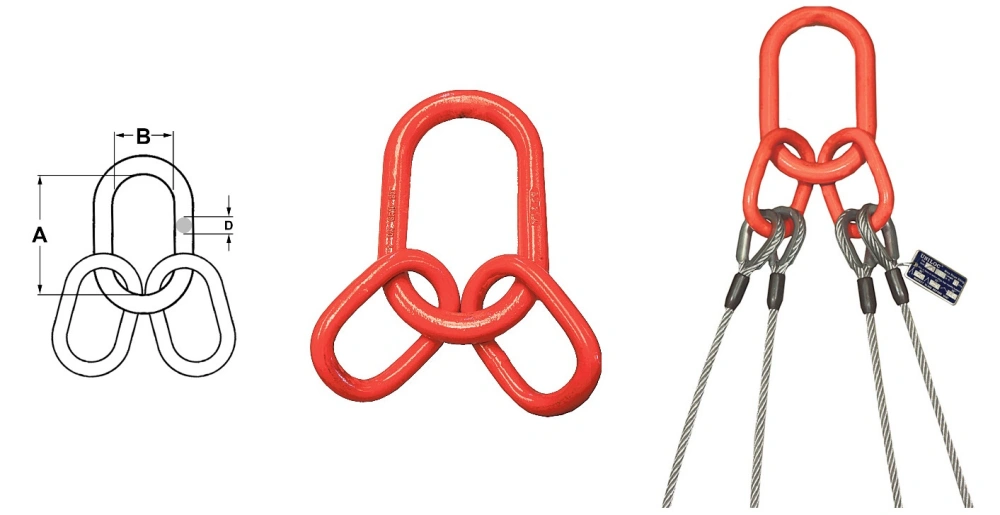
Oblong master links are the most common type you will find in industrial rigging. You use them as the main connection point in multi-leg sling assemblies. Their elongated shape gives you more internal clearance, which helps when you need to connect several slings or chains to a single lifting hook.
Made from high-strength alloy steel
Available in sizes from ½ inch to 3-1/2 inches
Load capacities range from 7,400 lbs to 279,000 lbs
Finished with bright red paint for visibility and corrosion resistance
Manufactured to ASTM A952 and ASME B30.26 specifications
Size | Working Load Limit (lbs) |
|---|---|
½” | 7,400 |
3-1/2” | 279,000 |
You often see oblong master links in construction, marine, and heavy industrial settings. These master links work well with other rigging hardware, making them ideal for complex lifting assemblies.
Powerful Machinery’s G80 Links and G100 Links include a wide range of oblong master links. These products meet both U.S. and European standards, so you can trust their strength and reliability in demanding environments.
Pear-Shaped Links
Pear-shaped master links have a unique design that resembles a pear. You use them when you need even load distribution and want to prevent shifting or rotating under load. The shape helps keep the load stable, especially when you lift items that might move or tilt.
Feature | Pear-Shaped Master Link | Oblong Master Link |
|---|---|---|
Shape | Resembles a pear, allowing for even load distribution | Elongated shape providing greater internal clearance |
Load Distribution | Ideal for uneven load distribution | Suitable for connecting multiple slings or chains |
Application | Prevents shifting or rotating under load | Used in complex lifting assemblies |
You might choose pear-shaped master links for special lifting tasks where stability is critical. These links are also available in Powerful Machinery’s G80 and G100 product lines, giving you options for different load requirements.
Master Link Sub-Assemblies
Master link sub-assemblies combine several master links or components into one unit. You use these when you need to connect multiple sling legs or create a more complex rigging setup. Sub-assemblies often include a main master link with smaller intermediate links attached.
Advantage | Description |
|---|---|
Durability | Stainless steel construction makes them suitable for harsh environments. |
Corrosion Resistance | Essential for chemical plants, maritime, or offshore industries. |
High Temperature Stability | Withstand high temperatures while maintaining stability and function. |
You benefit from using master link sub-assemblies in environments where durability and corrosion resistance matter most. Powerful Machinery offers master link sub-assemblies in both G80 and G100 grades, ensuring you get certified quality for your most demanding projects.
Tip: Use master link sub-assemblies when you need to connect several sling legs or require extra durability in harsh environments.
Coupling Links
Coupling links help you connect different rigging components quickly and securely. You use them to join master links, hooks, or adjusters in modular chain sling setups. Their design allows for fast assembly, disassembly, and inspection, which saves you time during maintenance or repairs.
Configuration/Use | Description |
|---|---|
Modular Chain Sling Setups | Connect various components in modular chain sling assemblies for easy reconfiguration. |
Frequent Replacement | Ideal for gear that requires regular swapping or adjustments. |
Connection Points | Used to connect master links, hooks, or adjusters. |
Fast Inspection | Supports rapid inspection and part replacement. |
Overhead Lifting | Specifically tested for overhead lifting applications. |
You can rely on Powerful Machinery’s G80 and G100 coupling links for overhead lifting and other critical applications. These master links and coupling links meet strict international standards, giving you peace of mind during every lift.
Note: Always check that your coupling links are compatible with your master links and other rigging hardware to ensure safe operation.
When you choose master links from Powerful Machinery, you get products that are engineered for strength, tested for safety, and certified to meet or exceed global standards. Whether you need oblong master links, pear-shaped master links, sub-assemblies, or coupling links, you can find the right solution for your lifting needs.
Identification and Standards for Master Links
Required Markings
You need to check every master link for clear identification markings before you use it. These markings help you confirm the link’s strength, size, and manufacturer. According to ASME B30.26 and other international standards, each master link must display:
Manufacturer’s name or trademark
Working load limit (WLL)
Size or diameter
Grade or material type
Traceability code or batch number
These markings make it easy for you to verify if the link matches your lifting requirements. You should never use a master link if any of these markings are missing or unreadable.
Reading Markings
When you read the markings on a master link, you gain important information about its safe use. Look for the working load limit first. This number tells you the maximum weight the link can safely handle. Next, check the grade or material type, such as G80 or G100.
These grades show the strength and quality of the steel. The manufacturer’s name or logo helps you trace the product back to its source. You also find a batch number or traceability code, which links the link to its test records and certifications.
Tip: Always compare the markings on your master link with your rigging plan. This step helps you avoid overloading and ensures you use the right hardware for the job.
Compliance and Certification
You want to use master links that meet strict international safety standards. Powerful Machinery’s G80 and G100 master links go through rigorous testing and certification.
Each G80 U.S. Type A-347 Welded Master Link Assembly meets and exceeds ASME B30.26 requirements. The factory tests every link to ensure safety in lifting operations.
Testing Procedure | Description |
|---|---|
Strict Testing | Every G100 Connecting Link undergoes strict testing and certification in accordance with international lifting standards. Certificates of conformity and batch test reports are provided with orders. |
Each batch of G100 Connecting Links is subjected to rigorous testing, including:
100% 2.5 times working load limit test
100% magnetic particle inspection for cracks
Breaking load test
20,000 fatigue tests at 1.5 times working load limit.
You also benefit from products certified by organizations like CSD (Certified Safety Director) and MSP (Master Safety Professional), both accredited under ISO/IEC Standard 17024:2012.
Certification | Description |
|---|---|
CSD | Certified Safety Director, accredited under ISO/IEC Standard 17024:2012. |
MSP | Master Safety Professional, also accredited under ISO/IEC Standard 17024:2012. |
When you choose Powerful Machinery, you get master links that meet or exceed global safety standards. This commitment to quality gives you confidence in every lift.
Applications and Differences
Uses in Rigging and Lifting
You see master links and master rings in many rigging tasks across different industries. In construction, you use them to connect sling assemblies for lifting heavy beams or equipment.
On cargo docks, you rely on them to secure loads to crane hooks. In marine work, you use these connectors to attach lifting gear for moving ship parts or supplies. The table below shows how you use master links in key industries:
Industry | Application Description |
|---|---|
Cargo Handling | Used for securely connecting lifting means to crane hooks. |
Construction | Essential for safe lifting operations in construction sites. |
Marine | Important for connecting lifting equipment in marine settings. |
You depend on these connectors to keep your rigging safe and efficient. Powerful Machinery designs master links and master rings to handle the toughest rigging applications. Their products work with many types of sling assemblies, making them a top choice for professionals.
Choosing the Right Link
You must select the correct master link or master ring for your rigging job. Start by checking the size. The link should fit the slings and hooks you plan to use. Next, look at the strength. Make sure the link meets the breaking load factor for your region.
Always check compatibility with your sling assemblies, whether you use chain, wire rope, or synthetic slings. Review the working load limit (WLL) to confirm it matches your lifting needs. For multiple-leg sling assemblies, choose a configuration that keeps your load balanced and secure. The table below lists key points to consider:
Consideration | Description |
|---|---|
Size | The master link must be compatible in size with the slings and hooks it connects to. |
Strength | Must meet the required breaking load factor, typically 4:1 under Australian standards. |
Compatibility | Must fit correctly with the specific type of sling being used (chain, wire rope, etc.). |
Standards | Adherence to relevant industry standards and practices is crucial for safety and compliance. |
All components must have sufficient WLL for the intended lifting task. | |
Configuration for Multi-leg | Proper configuration is necessary for master links used in multi-leg slings to ensure safety. |
Tip: Always match your master links and master rings to the exact needs of your rigging assemblies. This step helps prevent accidents and keeps your team safe.
Powerful Machinery offers a wide range of certified links that fit many rigging setups. Their G80 and G100 links work with different sling assemblies and lifting equipment, giving you flexibility on every job.
Master Links vs Master Rings
You often choose between master links and master rings for rigging. Master links have an oblong or pear shape. You use them most often in sling assemblies, especially when you need to connect several sling legs to a single lifting point. Master rings are round.
You use them in rigging when you need a circular connection or when your setup requires a different load path. Master rings work well in some rigging assemblies, but you see them less often in multiple-leg sling assemblies.
Feature | Master Links | Master Rings |
|---|---|---|
Shape | Oblong or pear | Circular |
Main Use | Sling assemblies, multi-leg | Specific rigging assemblies |
Load Distribution | Even for multi-leg slings | Varies, depends on setup |
Frequency | Most common in rigging | Less common |
You should pick master links for most sling assemblies and heavy-duty rigging applications. Choose master rings when your rigging needs a round connector or when your equipment requires it. Powerful Machinery’s products give you both options, so you can always find the right fit for your rigging assemblies.
Safety and Removal Criteria
Inspection Guidelines
You should inspect your master links and collector rings before every use. Start by cleaning the sling and removing any debris. This step helps you see the surface clearly. Always check the identification tag to confirm the specifications match your lifting plan.
Examine each link for signs of wear or damage. Look for cracks, corrosion, or any unusual marks. Pay close attention to the shape of the link. If you notice any deformation or excessive opening, you need to take action.
Clean the sling and collector rings before inspection.
Check the identification tag for correct specifications.
Inspect each link for cracks, wear, or deformation.
Remove the sling if you find excessive opening.
Regular inspections help you catch problems early and prevent accidents during lifting operations.
Removal Standards
You must follow strict removal standards to keep your rigging safe. The table below shows common criteria for removing a master link from service:
Inspection Criteria | Description |
|---|---|
Cracks Found | If you detect cracks during inspection, remove the master link immediately. |
Deformation | Remove the link if you see any bending or excessive opening. |
Depth of Cracks | Cracks deeper than 2mm require further metallurgical examination. |
If you find any of these issues, do not use the link. Replace it with a certified component. Powerful Machinery tests every product to meet or exceed ASME B30.26 and international standards, so you can trust your equipment.
When to Replace?
You should replace master links and collector rings when you see any signs of damage, wear, or deformation. Never ignore cracks, even if they seem small. If the identification markings become unreadable, replace the link. Always use certified products for replacements.
Powerful Machinery provides high-quality, tested links that ensure your lifting operations stay safe and reliable.
Safety comes first. Regular inspections and timely replacements protect you and your team.
Conclusion
You have learned that master links and collector links are essential for safe rigging. The table below highlights the most important points:
Key Point | Description |
|---|---|
Types | Master links and rings secure connections in lifting assemblies. |
Selection | Choose based on load, sling setup, and environment. |
Maintenance | Inspect master links often and remove damaged ones from service. |
Always select certified master links from trusted suppliers.
High-quality master links prevent failures and keep your team safe.
Reliable master links support a strong safety culture and regulatory compliance.
Visit Powerful Machinery’s website for expert advice and product options. Make safety and proper hardware selection your top priorities in every lifting operation.
FAQ
What is the main purpose of a chain master link?
You use a chain master link to connect multiple sling legs to a single lifting point. This link helps you distribute weight evenly and keep your rigging assembly stable during lifting operations.
How often should you inspect master links?
You should inspect master links before every use. Regular checks help you spot cracks, wear, or deformation early. This practice keeps your lifting operations safe and prevents accidents.
Can you use master links with wire rope and synthetic slings?
Yes, you can use master links with wire rope, chain, or synthetic slings. Always check compatibility and make sure the link meets the working load limit for your specific rigging setup.
What certifications do Powerful Machinery master links have?
Powerful Machinery master links meet international standards like ASME B30.26, ISO9001, and TUV Rheinland. You get certified products that ensure safety and reliability in demanding lifting environments.

